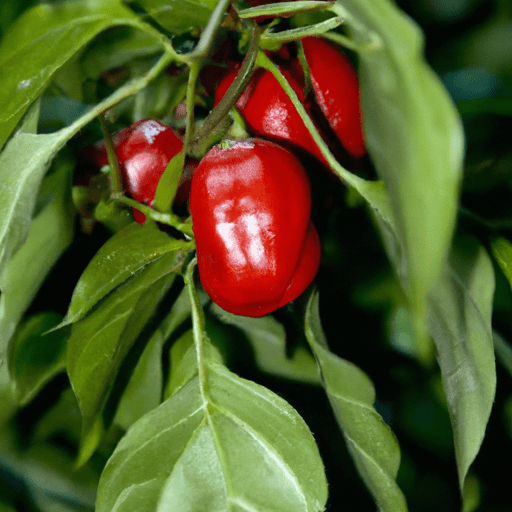Exploring the Versatile Anaheim Peppers: A Flavorful Addition to Any Dish
When it comes to peppers, the Anaheim pepper often flies under the radar. However, this vibrant and versatile ingredient has a lot to offer in terms of taste, culinary uses, and nutritional value. Whether you’re a seasoned home cook or a culinary enthusiast looking to expand your flavor repertoire, the Anaheim pepper is definitely one to consider.
A Taste Profile That Tickles the Taste Buds
Anaheim peppers are known for their mild to medium heat levels, making them more approachable compared to their spicier counterparts. These peppers have a gentle heat that adds depth and complexity to a wide range of dishes without overwhelming the palate. With a Scoville heat unit ranging from 500 to 2,500, the Anaheim pepper is perfect for those who enjoy a touch of spiciness without setting their taste buds on fire.
Discovering Culinary Uses
In the kitchen, Anaheim peppers are incredibly versatile, making them an exciting ingredient to experiment with. Their mild heat and slightly sweet taste lend themselves well to various cooking techniques, such as roasting, grilling, sautéing, or stuffing.
One popular use for Anaheim peppers is in Mexican cuisine, where they are frequently employed in salsas, enchiladas, and chiles rellenos. Roasting or grilling the peppers not only enhances their flavor but also adds a delightful smoky element to the dishes. The velvety, smoky flavor of roasted Anaheim peppers is a fantastic addition to creamy soups, stews, or even as a topping for burgers and sandwiches.
Nutritional Value: A Healthy Kick
Apart from their culinary appeal, Anaheim peppers offer a range of health benefits too. These peppers are packed with vitamins and minerals, including vitamins A and C. The vibrant green color of Anaheim peppers is a visual indicator of their high vitamin content. Additionally, Anaheim peppers also provide a good amount of fiber, folate, and potassium, making them a nutritious addition to any meal.
A Brief History and Interesting Facts
Originally named after the city of Anaheim, California, these peppers have a fascinating history. They are believed to have been cultivated by a farmer named Emilio Ortega in the early 20th century. Since then, Anaheim peppers have become widely popular in Mexican and Southwestern cuisines due to their versatility and mild heat.
Interestingly, the Anaheim pepper is often used in its mature form, which is when it turns from green to a deep red color. The red Anaheim pepper, also known as the New Mexico chile or California chile, is slightly sweeter and hotter than its green counterpart.
The Anaheim pepper, with its mild heat and versatile nature, is a fantastic addition to any cook’s culinary repertoire. Whether you’re looking to add a subtle kick to your dishes, explore Mexican and Southwestern flavors, or simply incorporate a nutrient-rich ingredient into your meals, the Anaheim pepper is a reliable choice. From salsas to enchiladas, soups to sandwiches, the Anaheim pepper offers a delightful flavor journey that will leave you craving more.
Facts about Anaheim Peppers:
Origin: Anaheim peppers, also known as New Mexico peppers, were first grown in the city of Anaheim, California. They were originally derived from a pepper variety brought to California by a farmer from New Mexico in the early 1900s.
Appearance: Anaheim peppers are long and slender, typically measuring around 6-10 inches in length. They have a curved shape and a smooth, waxy skin that can range in color from light green to dark green when unripe. As they mature, they turn bright red.
Heat level: Anaheim peppers have a mild to medium level of spiciness, usually ranging from 500 to 2,500 Scoville Heat Units (SHU) on the Scoville scale. The heat of an Anaheim pepper can vary depending on factors such as growing conditions and the specific pepper variety.
Common uses: Anaheim peppers are popular in Mexican and Southwestern cuisine. They are commonly used in salsas, sauces, soups, stews, and as a filling for chiles rellenos. They can also be roasted and stuffed with cheese or other ingredients for a flavorful side dish.
Flavor profile: Anaheim peppers have a mild, slightly sweet taste with a subtle earthy flavor. They are often compared to bell peppers but with a hint of spiciness.
Nutritional benefits: Anaheim peppers are low in calories and are a good source of dietary fiber and vitamins. They are particularly rich in vitamin C and also contain vitamins A and B6, along with minerals such as potassium and manganese.
Unique properties: One unique property of Anaheim peppers is their ability to be both mild and versatile, lending themselves well to various culinary applications. They are also known for their thin skin, which makes them easy to peel after roasting.
Historical significance: Due to their popularity in California and the American Southwest, Anaheim peppers have become a staple ingredient in several traditional dishes. They have played a significant role in shaping regional cuisines and are often celebrated at chili festivals and cook-offs throughout the region.




Use the share button below if you liked it.
It makes me smile, when I see it.